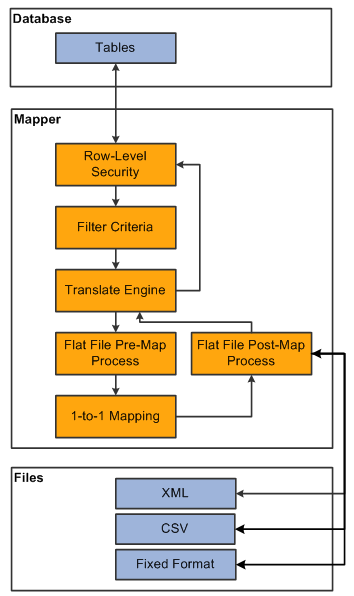Understanding the Data Export Import Utility
PeopleSoft Financials delivers the Data Export Import Utility, which is a data-mapping utility that empowers you to map fields easily and to interface both incoming and outgoing data between source and target. The data set for the source and target can be in XML, flat file, fixed, or record formats. Examples of typical uses for this mapping utility are:
Importing external data from third-party systems.
Exporting data to third-party systems.
Creating payment files by format.
Creating statutory audit files.
You can map simple structures or modify complex mappings without having to alter the underlying PeopleCode, thus avoiding customizations. The Data Export Import Utility applies transformation rules to format the data with controls in order to meet third-party system requirements.
The prerequisite for implementing the Data Export Import Utility process includes familiarity with PeopleSoft documents.
See the product documentation for PeopleTools: Documents Technology.
The Data Export Import Utility mapping process enables you to:
Export PeopleSoft database data to these formats:
Delimited files, such as CSV.
Fixed format files.
Other database records.
XML files.
Import data from these formats into a PeopleSoft database:
Delimited files, such as CSV.
Fixed format files.
XML files.
These steps comprise the Data Export Import Utility mapping process:
Define or identify a PeopleSoft document.
Define a document relationship.
Create a mapping definition for the source and target fields.
Define data transformation rules between source and target structures.
Run the Application Engine mapping process.
The mapping process is based on a PeopleSoft document and a document relationship definition that sets up the relationship rules between records and fields in the PeopleSoft document. Before running the mapping process, you create a map definition between the source and target data structures. The mapping process then applies the relationship and transformation rules when transferring the data from source to target.

For more information about defining a PeopleSoft document and setting up a document relationship, see Mapping File Layouts and Document Relationships .
For more information about defining the map, see Defining the Data Source and Target.
For more information about executing the mapping process, see Requesting the Data Export Import Process.